Kobe
In November, 1995, a Philadelphia sports magazine assigned me to shoot a local high school player thinking about entering the NBA draft. This was not as common in 1995 as it is now. At the time only four high school players had been drafted directly into the NBA, with Kevin Garnett’s jump in 1995 fueling the coming trend. I did not follow the high school basketball scene, but I was skeptical. A high school kid wanted to play in the NBA?
It was the first time I heard the name Kobe Bryant.
The plan was for some in-school features and a posed shot of him flying in for a dunk. I’d recently photographed an NBA rookie in a posed-action shoot, and after about 30 frames, the player tired and could not maintain his form. I got a crash course in shoot management that day, and learned some valuable lessons in giving directions to an athlete in mid-flight. I realized a lot of my directions assumed this would come natural to the player, but the process, and my "needs" stripped any natural-ness right out of the situation.
For most athletes, posed action for a photograph is much harder than simply executing their skills. For a set-up photograph of a basketball player elevating around the rim, the subject needs to hit a mark, essentially posing in mid-air in a way that looks dramatic, regardless of the practical reality of making a shot. A lot goes into that one millisecond to make the picture work. The athlete may have supernatural physical skills, but many times they are improvised. Asking him to think about a laundry list of details does not make it easier.

I spent part of the day in school with Kobe; went to class with him, saw him hanging out between classes with his friends and even got to shoot him playing soccer during gym class. (Notice that he's wearing his shoes to play!)
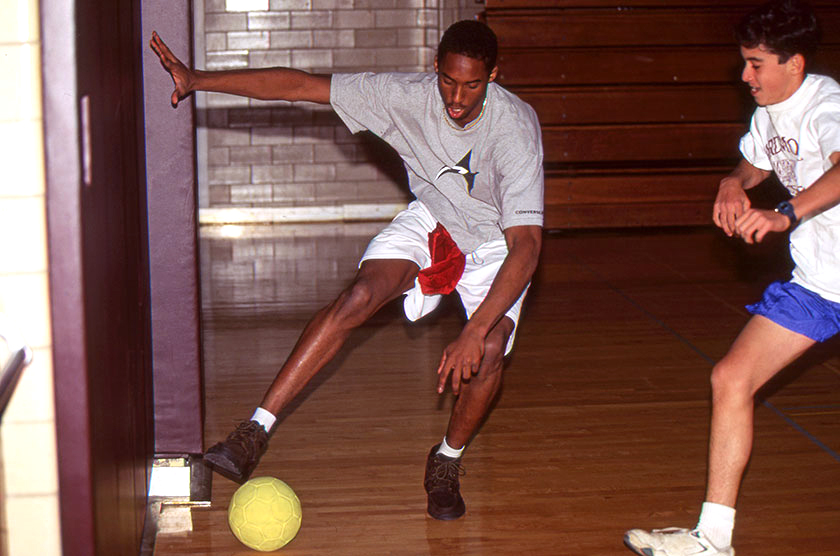
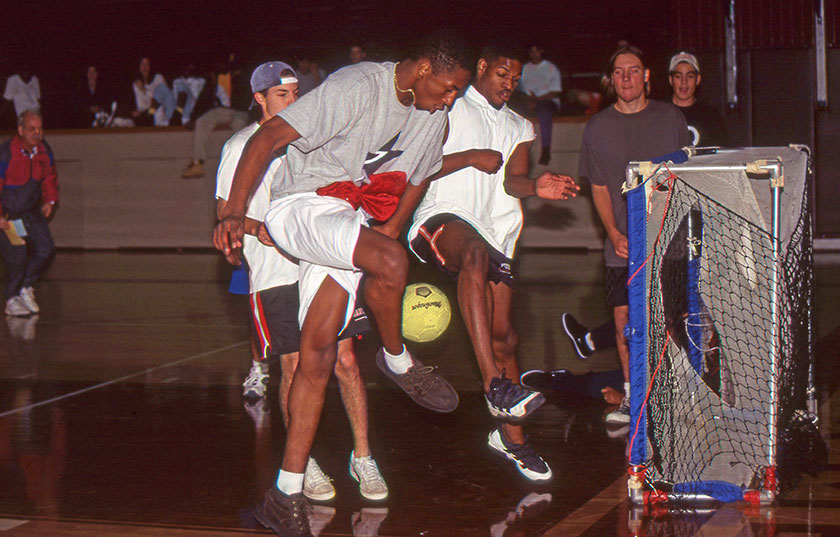
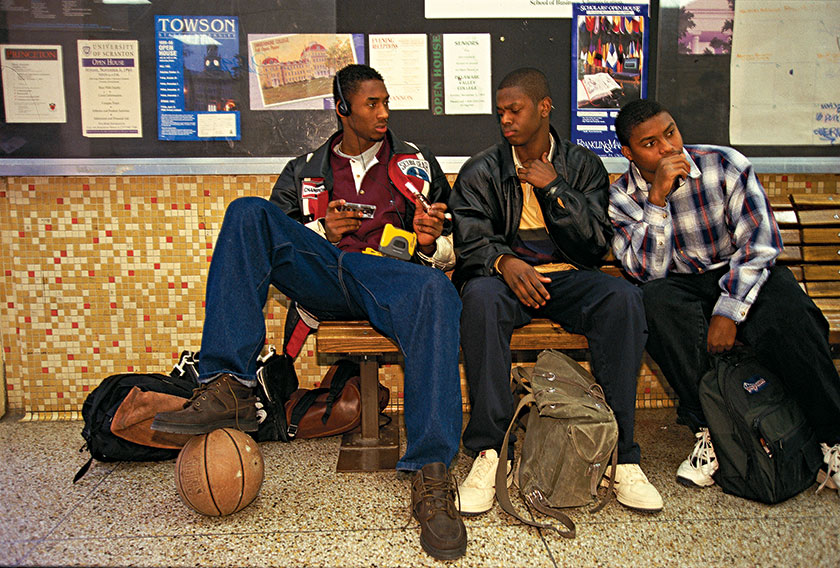
I can’t imagine a high school prospect today going into the wall to dig out a soccer ball like Kobe did that day. His team, The Kobe’s, won…..again, I would assume. It was all amazingly normal. His “fame” was basically restricted to the local Philly basketball community, not the national AAU scene today’s prospects participate in, and certainly not the kind of celebrity manufactured by social media.
After school we set up in the Lower Merion gym. I have a large, hand-painted canvas backdrop that I love, and it was a good match for the burgundy trimmed white home uniforms. After just a few test shots it was clear that Kobe Bryant was special. I had a much clearer idea of what I wanted to accomplish, and practiced verbalizing the instructions. Instead of describing what I wanted him to look like, I asked him to make moves, imagining players in certain places. I kept after him to pull his legs up, to compress his frame into a more athletic pose and when he did it the first time, you could see the light bulb go off over his head. He followed my directions and quickly understood the concept of creating that “frozen-in-time” image. He suspended himself in midflight, and after 60 frames, the pictures were only getting better.
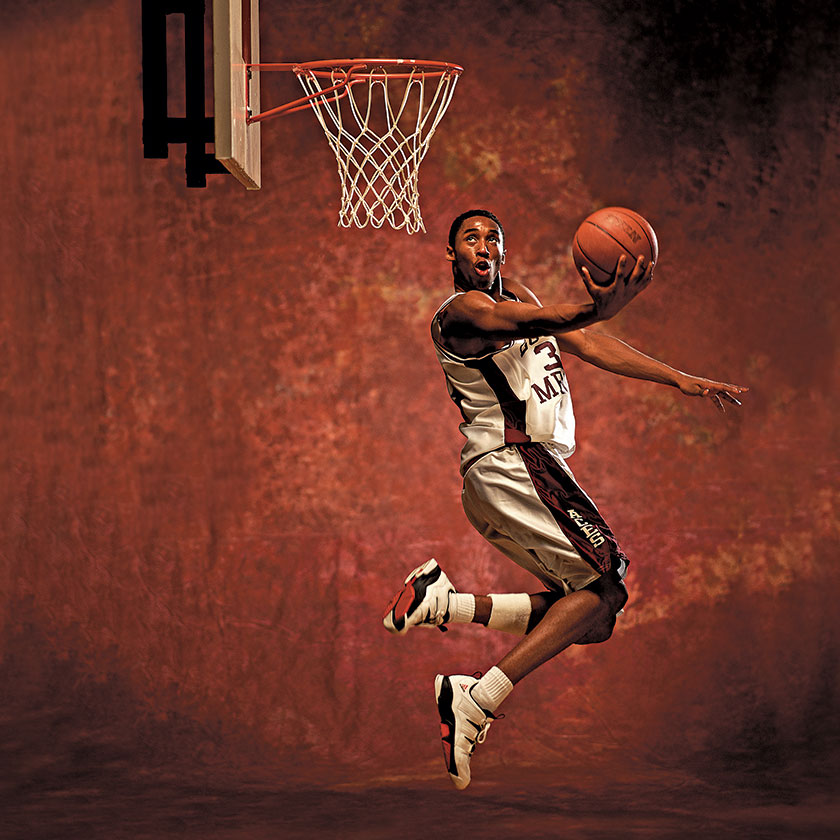
Now remember, 1995 was pre-digital; there was no live feed of images coming through to a monitor to compare and tweak. Kobe saw a few Polaroid test shots and then trusted my instructions! He seemed like he could go on all afternoon. I ran 7 rolls of film through a Hasselblad clamped to the ladder I was perched on. I left that gym a lot less skeptical than when I arrived.
March 1, 1996. Lower Merion played Chester, a perennial basketball powerhouse in the PIAA District One Championship game at the Pavillion at Villanova. I'm not sure anyone could have hand picked two communities more dissimilar. Pennsylvania officially designated Chester a “financially distressed area,” just months before the game, with their schools ranked last out of 501 state districts. Lower Merion sits just down the road from Villanova on Philadelphia’s tony Main Line. It was a game of the haves against the have-nots, and the salt in the wound for Chester was that Lower Merion had Kobe Bryant.
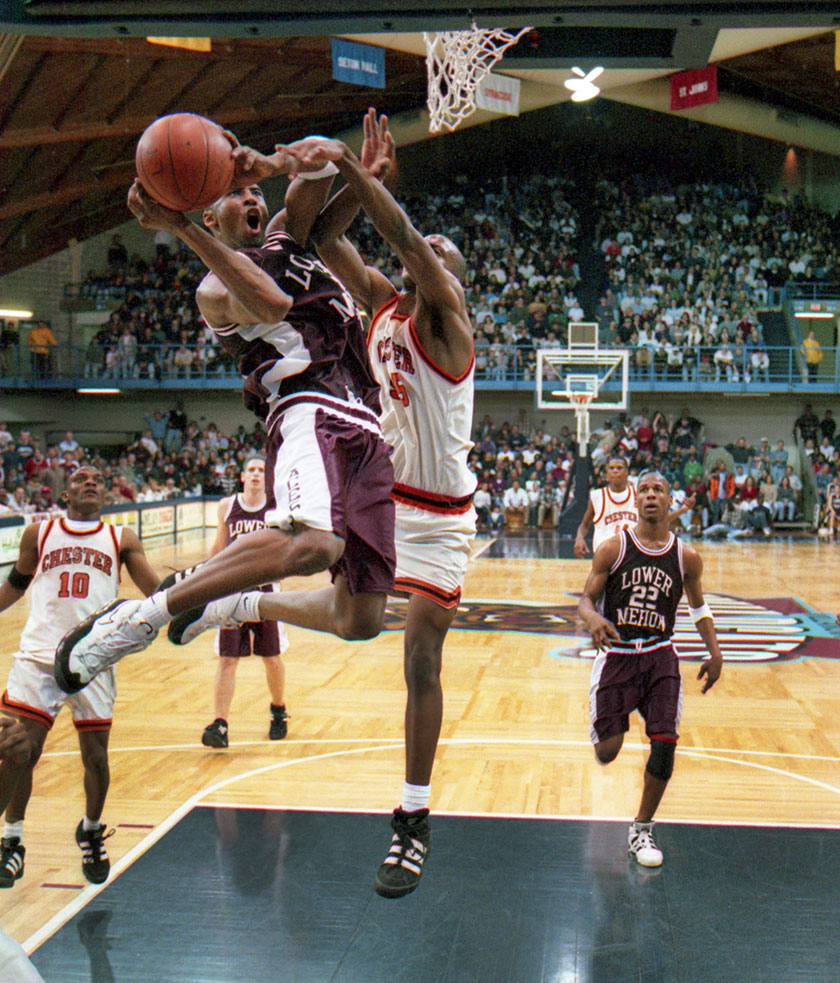

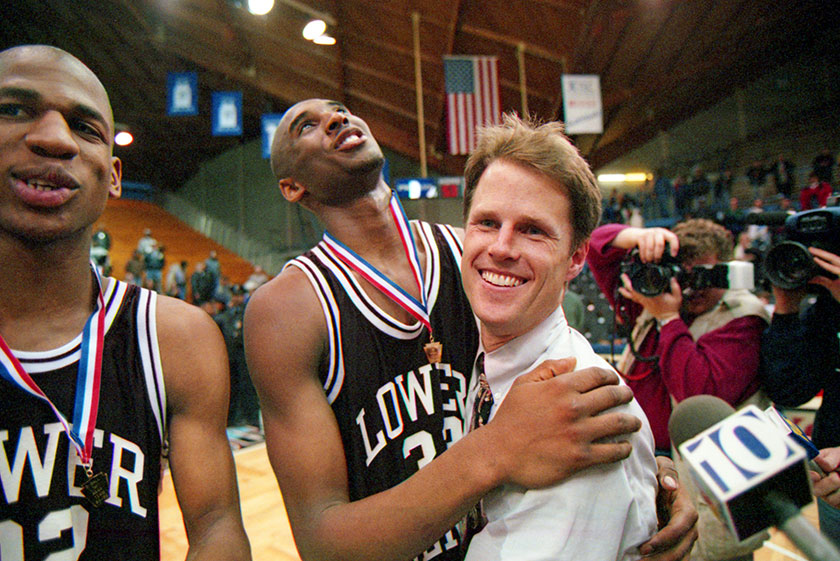
Kobe was dominant in that game and the body language, emotion and reactions that would become famous as a Laker were already on display. Lower Merion won the District title, and then beat Chester again in the state semifinals before eventually clinching the PA title.
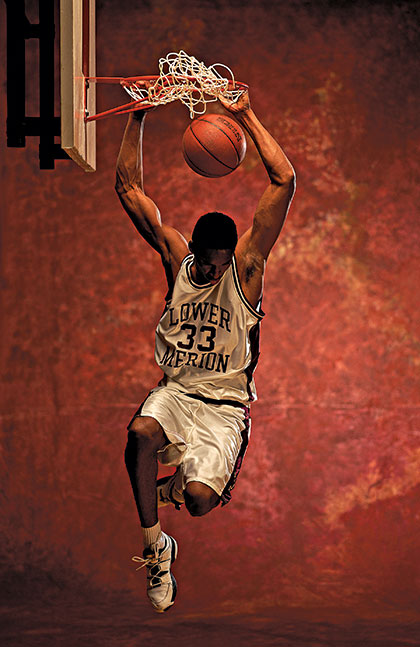
It’s always fascinating to work one on one with a great talent, though I freely admit I did not foresee this kid becoming a single-name phenomenon back in November ‘95. I look back on that day when he was just a kid, floating in the air, full of innocence and potential, and realize it’s affected every shoot I’ve had with a young athlete; you just never know where it’s going to lead.
All photographs ©Al Tielemans (1995, 1996). Game action Canon EOS 1N, EF 80-200MM f.2.8L; School images Canon EOS 1N, EF 17-35mm f 2.8L, 540EZ Speedlight. Portrait images, Hasselblad 553 ELX, Zeiss 150mm f 4.0 CF T, Dynalite 2000 w/s power packs, Chimera Medium and Medium Strip Banks. Fuji Velvia 120 Film, Fujicolor Press 800 35mm Film.*
